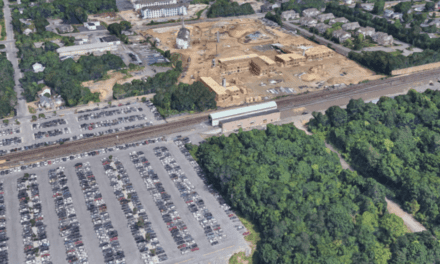The following was written for Long Island Business News’ Young Island:
The goal of Planning 101 is to educate the public on Long Island’s land use policy and planning theories. It is my firm belief that an informed public will make rational and sound policy decisions.
When we last left off in the Planning 101 series, we looked at Long Island’s groundwater system and how it dictates corresponding land usage (or should anyway). Today’s lesson is on a land use theory that gets a lot of media attention: smart growth.
What is Smart Growth?
One can flip through LIBN or Newsday and find multiple references to smart growth. The term is everywhere, but few stories actually stop and define the concept. The term is defined as development that, according to Smart Growth America, builds urban, suburban and rural communities with housing and transportation choices near jobs, shops and schools.
The problem is that now, as ArchDaily aptly put it: “smart growth has become a ubiquitous umbrella term for a slew of principles to which designers and planners are encouraged to adhere.” On Long Island, this means that the term has become a buzzword of sorts, which many developers throw in to garner community support. To be blunt, projects labeled as “smart growth” often are quite the opposite and aren’t worthy of the term. Smart Growth development is supposed to follow a set of criteria:
- Mix land uses
- Take advantage of compact building design
- Create a range of housing opportunities and choices
- Create walkable neighborhoods
- Foster distinctive, attractive communities with a strong sense of place
- Preserve open space, farmland, natural beauty and critical environmental areas
- Strengthen and direct development toward existing communities
- Provide a variety of transportation choices
- Make development decisions predictable, fair and cost effective
- Encourage community and stakeholder collaboration in development decisions
Next time you see a project labeled as “smart growth,” ask yourself this question: Does it fit the criteria?
Transit-Oriented Development is smart growth’s little brother; it is growth around transit hubs – a train station, for example – that embodies the principles of smart growth. Unlike smart growth though, TOD is harder to fake due to its locational need. Both concepts should only be implemented if the surrounding wastewater (sewers) and transportation (roads, rails) infrastructure can support the increased density. Further, it is standard practice to offset density increases with true public benefits (a public park for example).
Case Study:
Let’s look at a real world example of labeled “smart growth” by various media outlets, developers and advocate groups. Some projects are underway in Huntington recently, and I ask: Are these projects Smart Growth?
While the Huntington developments meet criteria 1, 2 and 3, they ignore 4, 6 and 8.
Smart Growth projects must meet all of the above criteria to be labeled as such. The notion of “walkable” is defined by planning standards as anything within a half-mile radius of the project. With these projects, the closest LIRR station is roughly 1.5 to two miles away, limiting transportation options. It’s easy enough to meet a mixture of land use (criteria 1) and taking advantage of compact design (criteria 2), mainly because these two criteria equate to increased density. However, without employing preservation of open space (criteria 6) and a variety of transportation options (criteria 8), all we are doing is creating higher density suburban sprawl, which is the complete opposite of Smart Growth.
Further, the creation of a diverse housing stock for all demographics (criteria 3) is frequently not addressed. As Kristen Lavelle stated yesterday in her concise Young Island piece, “…however harsh, the widely accepted reality is that young folks on Long Island face a paltry selection of housing stock.” The numbers support Kristen’s claims: Out of Long Island’s 980,478 housing units, the large majority were built before 1980. True smart growth projects can help add new and attainable housing units that the market wants to the regional supply, but we have to drop the buzzwords and pandering and start following basic planning principles. Not to pick on these particular projects, but overall it’s frustrating to see planning concepts thrown in time and time again in watered-down iterations to make a project more marketable.
This is why it is so critical to understand not only the 10 rules of Smart Growth, but how each one is interconnected. All the principles of Smart Growth work together to create a cohesive planning concept. Developers, you cannot pick and choose which aspects are convenient. It’s all or nothing. I say it’s time we go all in.
Richard Murdocco is a digital marketing analyst for Teachers Federal Credit Union, although the views expressed in this post are Murdocco’s alone and not shared by TFCU. Follow him on Twitter @TheFoggiestIdea, or email him at rich.murdocco@gmail.com.












